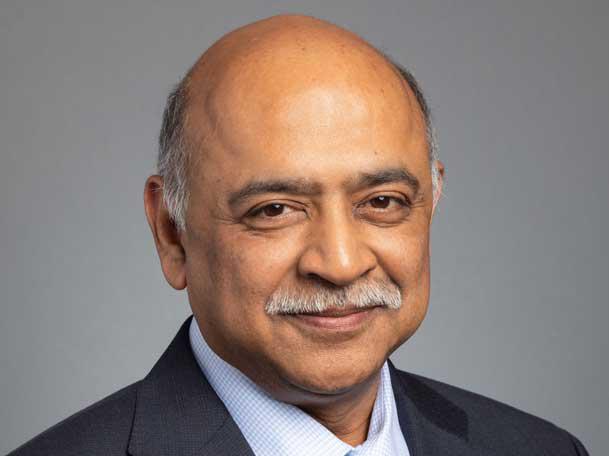New IBM CEO: Red Hat’s Hybrid Platform Enables Big Blue’s AI, Cloud, Edge Strategy
Arvind Krishna, the enterprise tech giant’s recently installed chief executive, opened IBM Think Digital with a virtual keynote discussing the technologies that will transform business operations, and how the coronavirus crisis is accelerating their adoption.

Recently installed IBM CEO Arvind Krishna had to rely on a digital medium for his first major address to the IBM customer and partner community, where he talked about how digital transformations are shaping how enterprises respond to the coronavirus crisis, and their business models well beyond.
In a keynote Tuesday morning, Krishna told more than 60,000 virtual attendees streaming the IBM Think Digital conference from all corners of the world that artificial intelligence, cloud and 5G networks are the “powerful core technologies all of you will use to translate how business operates,” Krishna said.
Blockchain and quantum computing soon will join in playing a major role in the digital technology transformations of the future, said the new CEO, an esteemed technologist who took the helm of Big Blue last month.
[Related: IBM Overhauling Channel Program As Partners Look To Hybrid Future]
IBM’s competitive advantage in enabling all those game-changing technologies, Krishna said, is an open hybrid cloud platform—a capability attained from its Red Hat subsidiary.
“We have joined forces with Red Hat to give you the needed capability to build mission-critical apps once and run them anywhere,” Krishna said.
While IBM’s success depends on a large portfolio of on-premises hardware and public cloud services, its strategy hinges on allowing enterprises to choose their infrastructure through Red Hat’s consistent and cloud-agnostic platforms. Customers never start their digital transformation journeys from scratch, Krishna said, but instead are grappling with legacy workloads and infrastructure.
“Hybrid cloud is about meeting you where you’re at in terms of the infrastructure choices you made,” Krishna said. That approach supports existing systems—and whatever transformation roadmap lies ahead.
A cohesive hybrid platform also frees enterprises from locking themselves into any public cloud provider’s innovation cycles, he added.
As computing environments span multiple public and private clouds, and increasingly are extending out to the network’s edge, the challenge for businesses is to weave all those elements together, he said.
“The world is becoming software-defined, and both consumers and business customers now expect the products they use to improve continuously and get better and better over time,” Krishna said.
To that end, IBM introduced two products: an application of Watson artificial intelligence to automate IT incident responses, and a joint effort with Red Hat to help telecoms build out 5G networks.
Watson AIOps automates how enterprises self-detect, diagnose and respond to IT anomalies in real time, reducing the number of costly outages, Krishna said.
The solution is built on Red Hat’s OpenShift Kubernetes platform to allow deployment in any hybrid cloud environment. It’s also integrated with Slack and Box.
Intelligent incident detection is especially important these days, as employees around the world, including IT professionals, are restricted from their work environments due to the coronavirus crisis.
“I strongly believe AI can play a critical role in assisting clients in this uncertain time,” Krishna said.
The 5G product will make it easier for IBM’s telecom customers to sync operations from their data centers and public clouds to edge environments. That solution incorporates Red Hat OpenStack, a cloud-building technology, and Red Hat’s OpenShift Kubernetes platform.
“The winners in the 5G and edge era will be those who embrace a hybrid cloud approach based on open technologies and standards,” Krishna said.
The generational shift to networks that rapidly transfer mobile data and support the proliferation of edge computing “is coming quickly,” Krishna said.
The newly minted CEO started his virtual keynote by touching on the pandemic that prevented a live address.
While IBM is pained to see the devastation caused by COVID-19, he said, the crisis has highlighted the important role technology companies have to play in driving progress.
“I’ve seen powerful new partnerships between government, academia and the private sector form overnight,” Krishna said. “We’ve all seen a massive mobilization of corporate capability to join the fight.”
And the coronavirus crisis has forced enterprises that were slow to adopt new technologies to reassess their digital transformation roadmaps.
“Transformation journeys that were going to last a few years are now being compacted into months,” he said.
Many enterprises now see the decisions they had previously put off are crucial in establishing competitive advantages, determining services to offer clients, and enabling them to scale in response to a crisis.
“Choosing which technology platforms power your business is the most consequential decision you can make,” Krishna said.